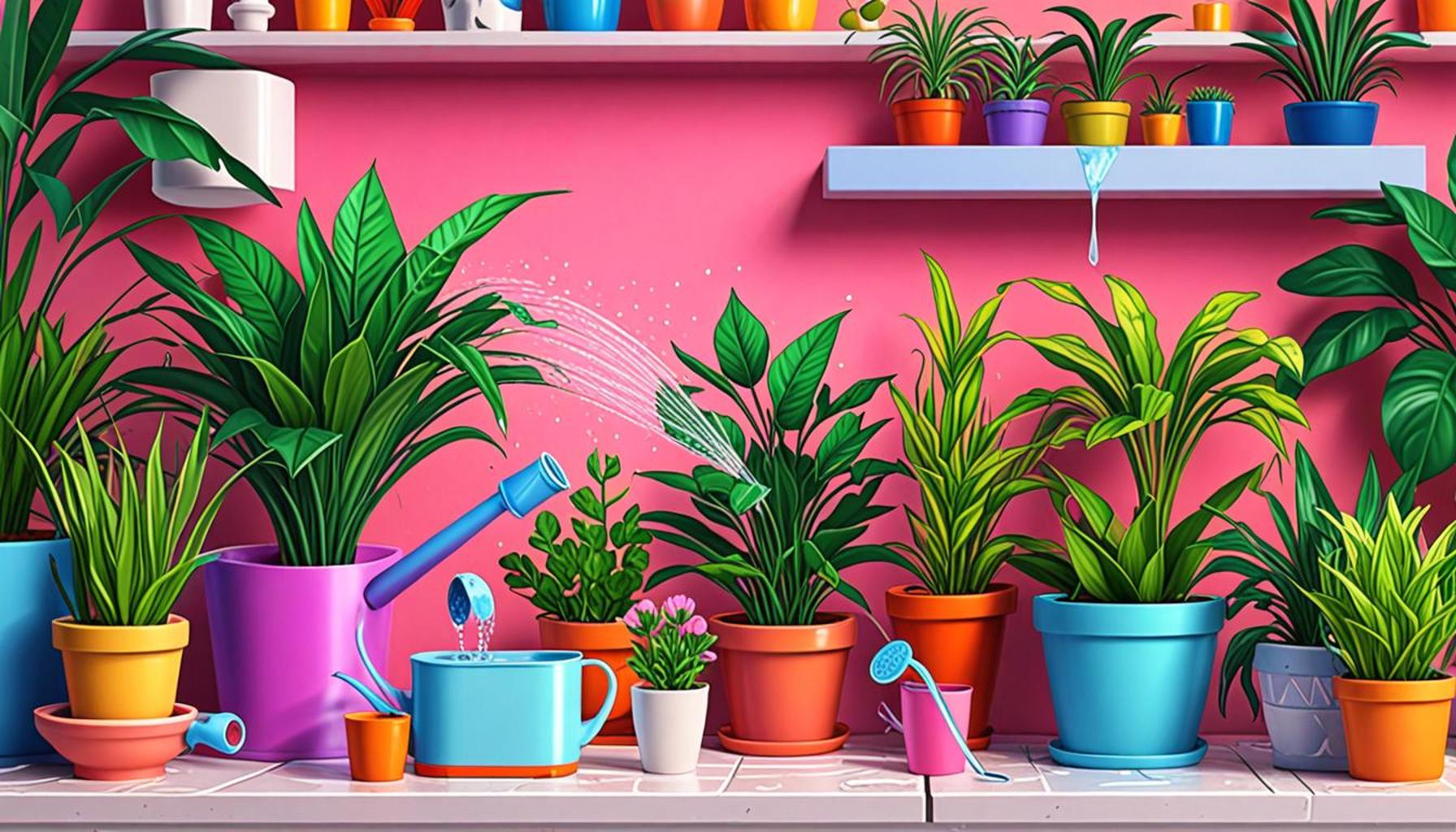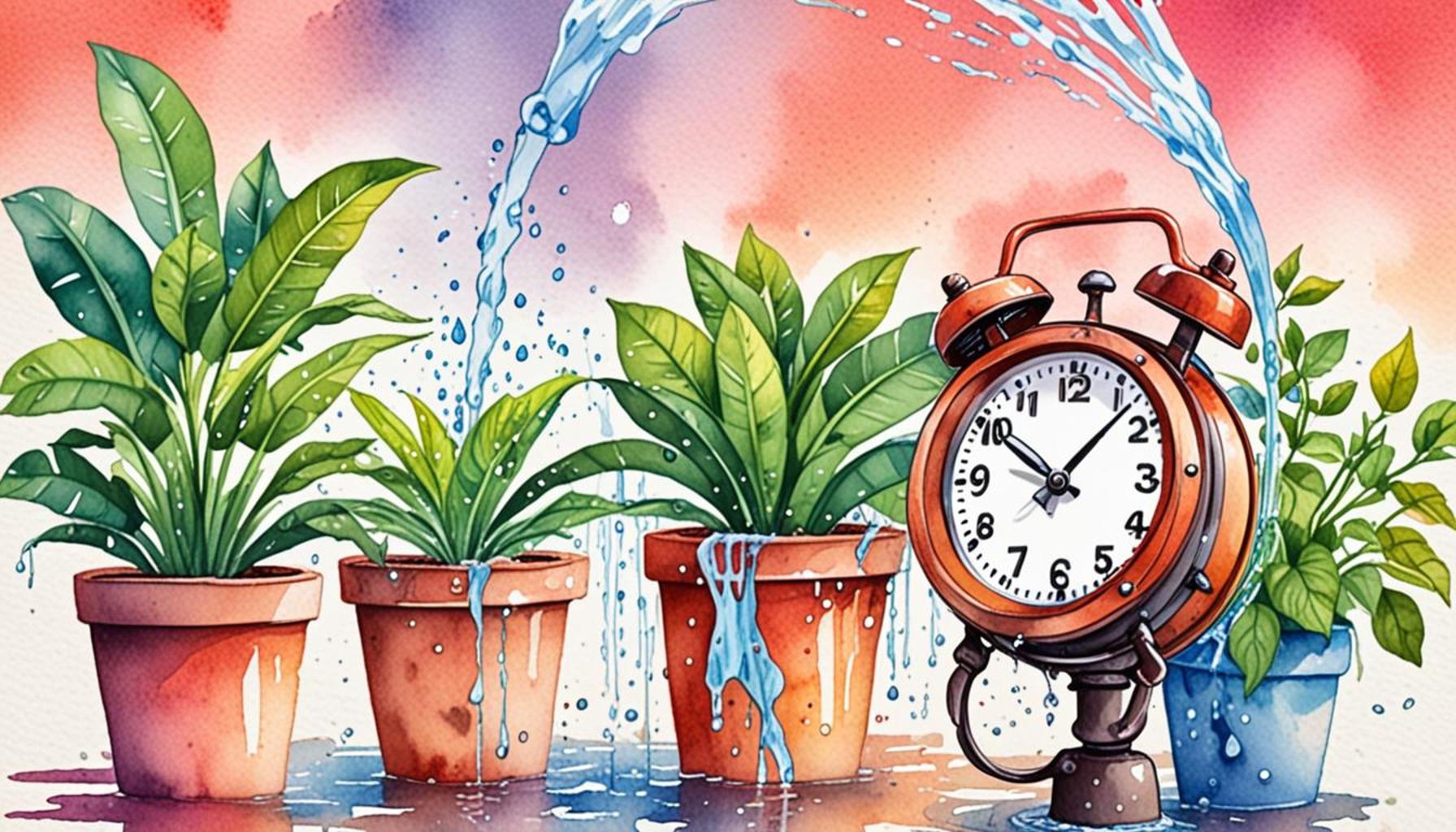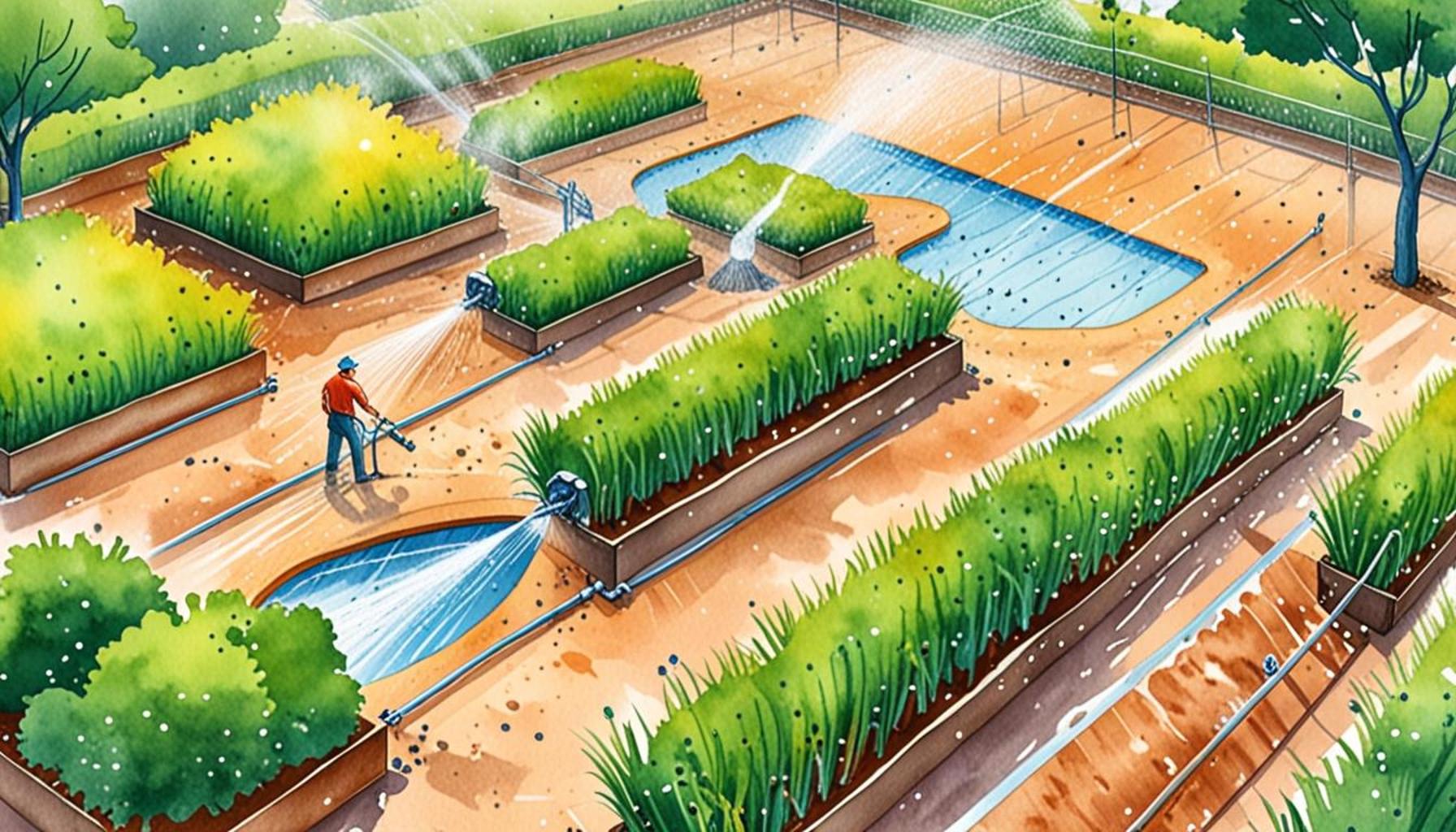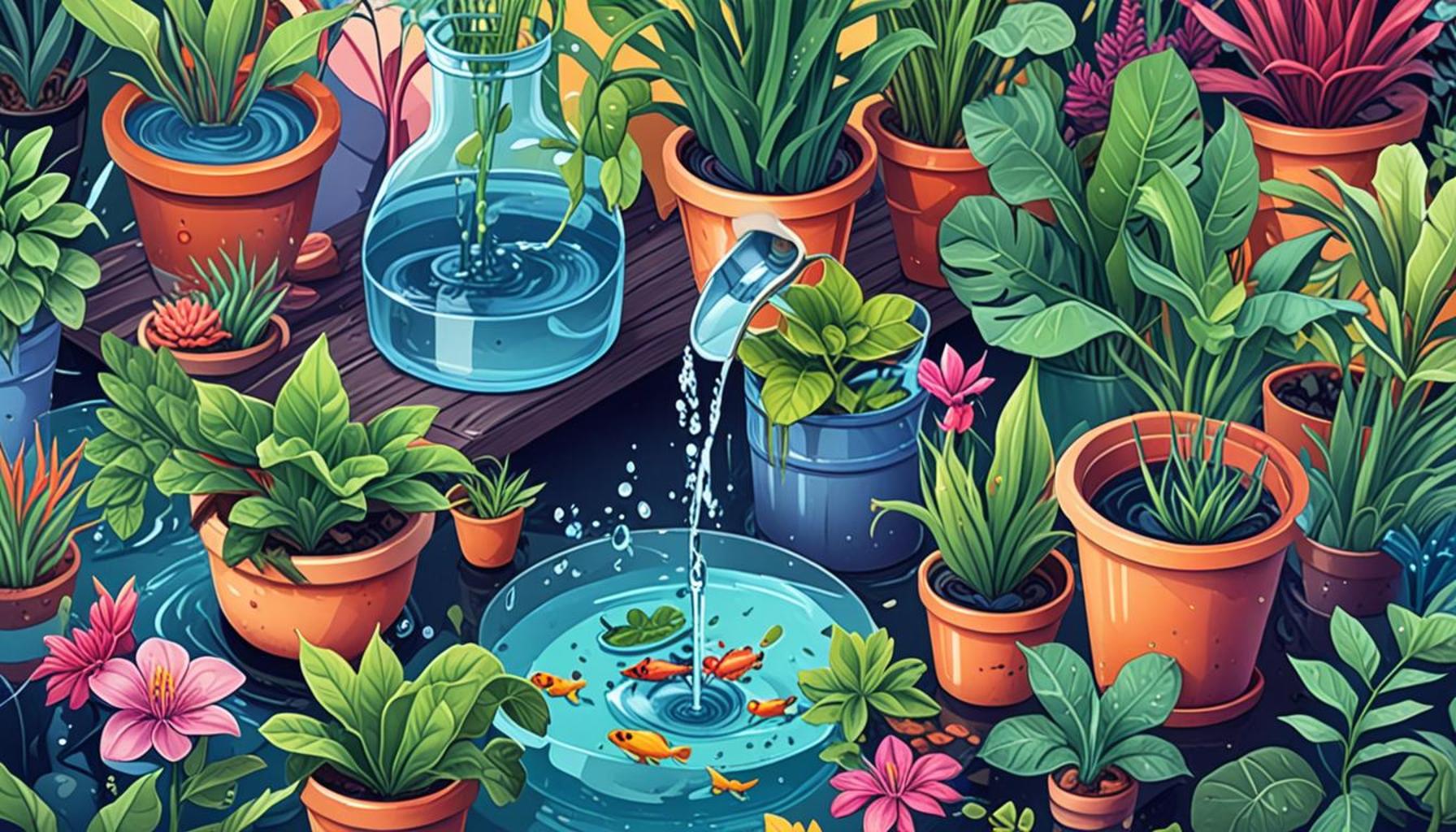Techniques for Watering Plants at Home: When and How to Do It

The Essentials of Plant Hydration
Watering your plants may seem like a simple task, but proper techniques transform this routine act into an art form that significantly influences the health of your green companions. Understanding when and how to water your plants is crucial for cultivating a vibrant garden, whether indoors or outdoors.
To excel at watering, consider the essential factors that dictate effective hydration:
- Plant Type: The water needs of plants are incredibly diverse. For example, succulents and cacti thrive in arid conditions and require less frequent watering compared to ferns or tropical plants, which naturally grow in humid environments. Knowing the specific needs of your plants can prevent issues such as root rot or dehydration.
- Weather Conditions: Seasonal shifts play a significant role in how quickly moisture evaporates from the soil. During hotter summer months, your plants might need more frequent hydration due to increased evaporation rates. Conversely, in cooler months or high humidity, the soil retains moisture for longer periods, affecting your watering schedule.
- Soil Type: The composition of your soil can dramatically influence your watering strategy. For instance, sandy soils drain quickly and may require more regular watering compared to clay soils, which retain moisture but can lead to waterlogged conditions if overwatered. A balanced potting mix often provides a compromise, promoting health while retaining enough moisture.
Equally important is the method of watering. Here are some techniques that can enhance your watering game:
- Bottom Watering: This technique involves placing your potted plants in a container of water, allowing the soil to absorb moisture from the bottom up. This encourages deep root growth and helps prevent fungal issues associated with water pooling on leaves.
- Drip Irrigation: For larger gardens or when growing vegetables, a drip irrigation system can provide a slow and steady supply of water directly to the plant’s roots. This method minimizes evaporation and is ideal for conserving water resources, especially in regions prone to drought.
- Watering Cans: Utilizing a watering can offers precise control over how much water is delivered to each plant. This method is particularly useful for small indoor plants, allowing you to cater to their specific hydration needs with attention and care.
In the following sections, we will explore each technique in detail, sharing insights and tips to ensure your plants receive the right amount of care tailored to their unique requirements. Understanding the delicate balance between overwatering and underwatering will empower you to keep your indoor garden robust and thriving, transforming your living space into a lush green sanctuary. Prepare to dive into the intricacies of plant care, as we equip you with the knowledge to cultivate success with every watering can splash.
DISCOVER: Click here to learn how to prepare your garden soil
Essential Watering Techniques for Your Home Garden
Mastering the art of watering plants goes far beyond simply dousing them with water; it requires a thoughtful approach tailored to the unique requirements of each species and the specific environment they thrive in. To aid your journey toward becoming a plant watering virtuoso, let’s delve into effective techniques that can elevate your plant care routine.
Understanding Watering Frequency
One of the first considerations in your watering regimen is establishing the frequency with which you need to hydrate your plants. There isn’t a one-size-fits-all answer, as different plants have distinct needs. As a general rule, it is best to check the soil moisture level before watering. Stick your finger about an inch deep into the soil; if it feels dry at this depth, it is time to water. However, if it feels moist, hold off for a bit longer. This simple touch test can help you avoid common pitfalls like overwatering or underwatering.
Water Temperature Matters
Another often-overlooked aspect of plant watering is the temperature of the water being used. Ideally, water should be at room temperature to avoid shocking the roots. Cold water can shock the plant’s system and impede its ability to absorb nutrients effectively. Using lukewarm water, particularly during the colder months, creates a more comfortable environment for your plants and helps them adapt better to changes.
Watering Techniques to Consider
Employing the right technique can make a considerable difference in the health and growth of your plants. Here are some popular and effective watering methods:
- Top Watering: This traditional method involves pouring water directly onto the soil surface until it seeps through the drainage holes. It’s efficient for most potting situations, but care should be taken to avoid wetting the leaves, as moisture aggregating on foliage can lead to fungal issues.
- Soaking Method: For larger potted plants, consider the soaking method. Place the plant in a basin of water for a couple of hours, allowing the soil to fully absorb moisture. This is particularly useful for plants with extensive root systems.
- Foam Watering Mats: For those looking for innovative solutions, using a foam mat soaked in water can provide consistent moisture through capillary action. Place the mat under your potted plants, and generate a self-watering effect that delivers hydration gradually over time.
Optimizing your watering practices based on technique, environment, and plant type empowers you to nurture a flourishing collection of greenery. Well-watered plants not only thrive aesthetically, but they also support overall plant health, making your home an inviting oasis. In the next sections, we will take a closer look at how specific environmental and plant characteristics influence the perfect watering strategy, equipping you with key insights to refine your plant care routine.
| Watering Technique | Advantages |
|---|---|
| Drip Irrigation | Promotes efficient water usage by delivering water directly to the roots, reducing evaporation. |
| Bottom Watering | Allows plants to absorb moisture gradually, preventing overwatering and root rot. |
| Misting | Adds humidity to the environment, beneficial for tropical plants, ensuring optimal growth conditions. |
| Soil Moisture Sensors | Provides real-time feedback on soil moisture levels, helping to maintain ideal watering intervals. |
Incorporating these techniques can significantly enhance your plant care routine. Understanding when and how to water your plants is crucial for their health, and each method listed offers distinct benefits tailored to different types of plants and environments. By adopting these watering strategies, you can ensure your indoor garden thrives, showcasing the beauty of your home while promoting sustainability through responsible water usage. As you delve deeper into the art and science of plant care, consider experimenting with these techniques to find the best fit for your growing collection.
DISCOVER MORE: Click here for essential tips on succulents
Tailoring Your Watering Strategy to Plant Needs
Every plant has unique characteristics that dictate its water requirements, and understanding these nuances is key to successful plant care. Beyond general techniques, awareness of specific plant types, their natural habitats, and growth patterns can significantly inform your watering strategy.
Assessing Plant Type: Tropical vs. Succulent
When it comes to watering, the type of plants in your home garden can drastically change the rules of engagement. Tropical plants, such as ferns and pothos, thrive in a humid environment and often require more frequent watering. These plants prefer a consistently moist soil condition, making a weekly watering schedule essential. Utilize a moisture meter if you’re unsure—this tool can provide precise readings of soil moisture at various depths, ensuring that your tropical plants are well-hydrated without teetering on the edge of waterlogging.
Conversely, succulents and cacti have evolved to endure drought and thus require a drastically different approach. Allow the soil to dry out completely between waterings, typically every two to three weeks, depending on environmental factors like light and temperature. Succulents prefer infrequent, deep watering sessions that mimic their natural desert habitat. A good rule of thumb is the “soak and dry” method: give your succulents a good soak, and then let the soil dry out completely before their next drink.
Environmental Influences on Watering Schedule
The environment in which your plants are growing plays a significant role in determining their watering needs. Factors such as humidity, temperature, and light exposure can create varied demands. For instance, during the summer months, indoor plants may be exposed to higher temperatures from sunlight, leading to increased evaporation rates and a need for more frequent watering. In contrast, during cooler periods or winter, most plants enter a dormancy phase and require less water.
Potential fluctuations in humidity levels also affect plant hydration. Utilizing a room humidifier or placing plants together to create a microclimate can enhance moisture retention in the air, benefiting plants that thrive in more humid environments. Simultaneously, for those in dry climates or during the winter, consider employing humidity trays. These trays filled with water and pebbles can help provide the needed humidity without waterlogging the plants.
Understanding the Role of Drainage
Effective watering isn’t just about how often and how much you water; it’s also about how well your plants can drain excess water. Choosing the right pot with adequate drainage holes is essential to keep your plants healthy. Ensure that the pots are made of materials that promote air circulation while allowing excess water to escape. Just like the relationship between soil composition and drainage, your pot choice is pivotal in determining whether your plants flourish or falter.
- Terracotta pots: They’re porous, allowing moisture to escape, which is ideal for plants that prefer drier conditions.
- Plastic pots: While they retain moisture longer than terracotta, they can also trap excess water if drainage holes are inadequate.
- Self-watering pots: These can help maintain a consistent moisture level, especially beneficial for busy gardeners who may forget to water regularly.
Choosing the right potting mix plays an equally crucial role as it can affect how quickly soil retains or drains moisture. A well-draining soil mixture with additives like perlite or vermiculite can prevent water retention issues, ensuring your plants receive optimal hydration.
By fine-tuning your watering approach based on plant types, environmental conditions, and effective drainage, you set the stage for a thriving indoor garden. Enhance your knowledge continuously, observing how each plant responds, and adjust your techniques accordingly for the best results. As you become more attuned to your plants, their individual needs will become clearer, allowing your green space to flourish like never before.
DISCOVER MORE: Click here to learn about the pros and cons of irrigation types</
Conclusion
In mastering the art of watering plants at home, adopting a tailored approach is essential for fostering a vibrant indoor garden. As we’ve explored, understanding the unique water requirements of different plant species—be it tropical varieties or resilient succulents—is foundational to your success. By creating a personalized watering schedule that considers the distinctive attributes of each plant and monitoring environmental factors such as humidity, temperature, and light exposure, you’ll enhance your gardening practices significantly.
Moreover, effective drainage cannot be overlooked. Selecting appropriate pots, whether terracotta for moisture-loving plants or plastic for those that prefer dryer conditions, is crucial. The right potting mix—not too heavy, not too light—will also contribute to healthy hydration practices, allowing your plants to thrive without the risk of overwatering.
By remaining observant and flexible, you can adapt your techniques to suit the dynamic needs of your plants. As you gain experience, take delight in the subtle changes that signal your plants’ health, and don’t hesitate to explore new watering methods, such as self-watering pots or moisture sensors. Gardening, much like life, is a journey of learning and discovery, and each watering session offers a new opportunity to connect with nature. Embrace these insights to cultivate not only beautiful plants but a richer relationship with your indoor green space.


